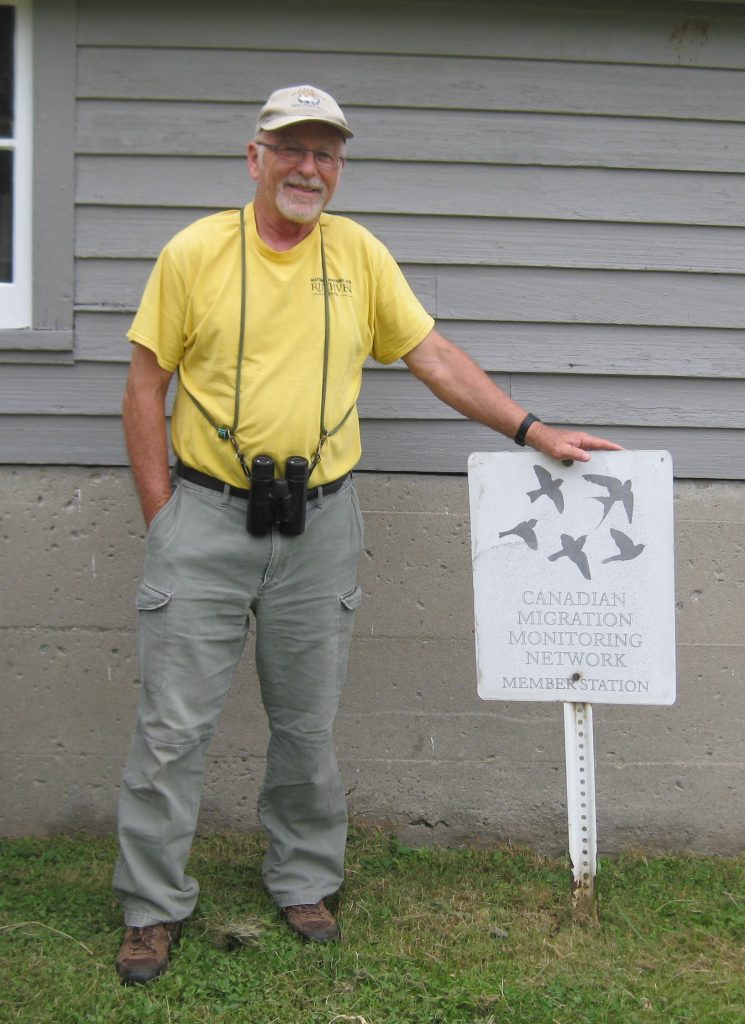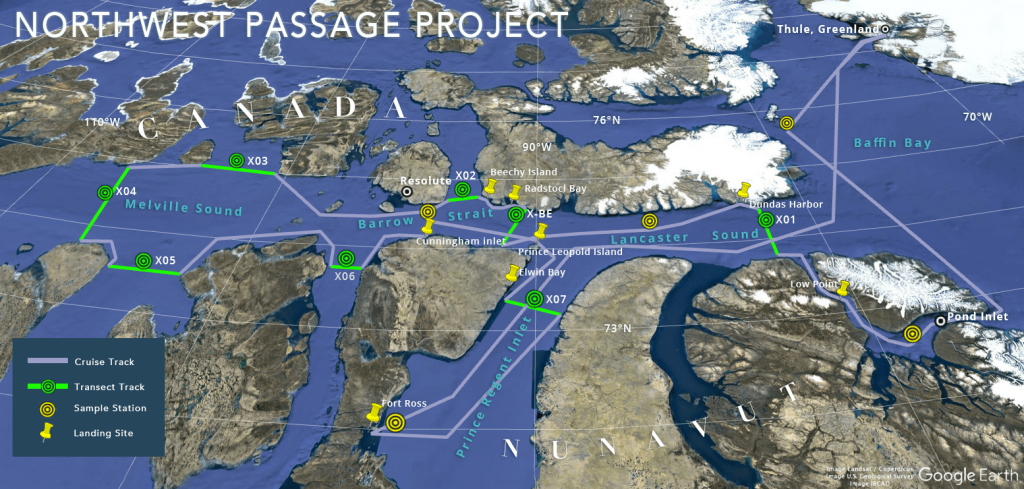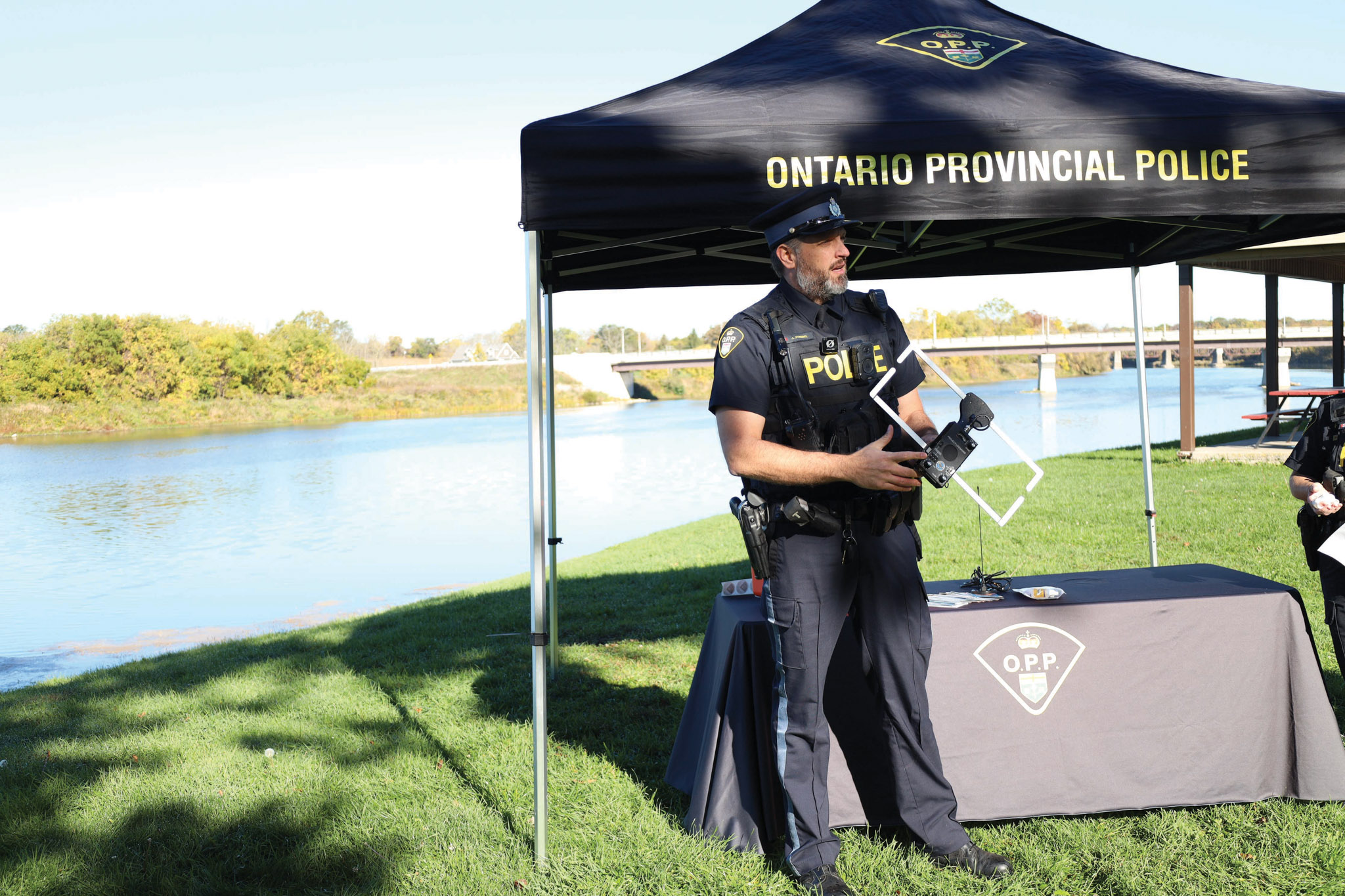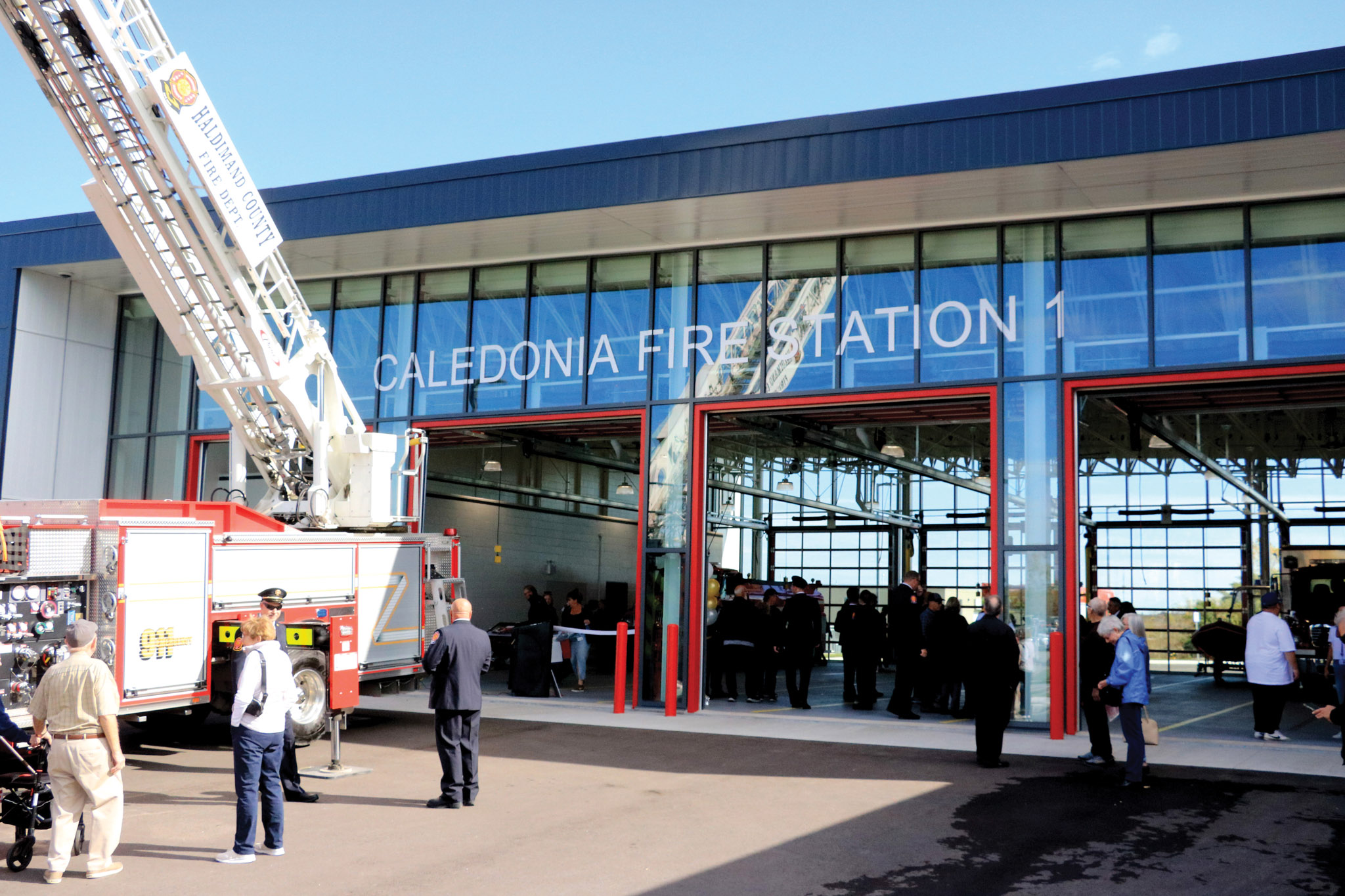

Rick Ludkin at the Ruthven Bird Banding Station.
By Kaitlyn Clark
The Haldimand Press
YORK—Local bird enthusiast Rick Ludkin will be heading through 2,000 nautical miles of the Northwest Passage to count seabirds during an 18-day research expedition departing from Thule, Greenland on July 18, 2019.
The Northwest Passage Project has been in the works for a few years now, getting as far as launching the boat last year, only to have it run aground the first day on a section of unchartered reef.
“This highlights the difficulties in the Arctic. There’s still lots of areas up there that have not been charted, that nobody knows much about,” said Ludkin, who is hoping they can make it the full distance this year. He has a strict protocol to follow when on the sea in which he will be stationed on one side of the boat for five-minute watches, with a primary focus on counting the number of birds within 300 metres, noting their species and location in relation to the boat to a voice recognition system to be recorded. “The beauty of this system is that you can then begin to calculate the density of birds per square kilometre.”
Ludkin, who lives in York, did not pursue any kind of science for post-secondary education and worked as a manager in a children’s mental health centre. However, he always had a love of birds. When asked where this love began, he said, “Genetics. I don’t know any other way to explain it. It’s just one of those interests that I’ve always had.”
When he was young, Ludkin began exploring his interest as a bird watcher, making lists and checking off species as he spotted them.
“I found after a while that was pretty unsatisfying. It didn’t tell me much about birds…. I started bird banding in the 1970s and went on to get my banding permit in the early 1990s,” said Ludkin, who started the Haldimand Bird Observatory 25 years ago with John Miles (now deceased). “I was looking for a place to band and at that time Ruthven National Historic Site was just getting going. I approached them … and they were quite keen. It’s been a match made in heaven.”
Ludkin can now be found regularly at Ruthven Park helping with various bird programs, including daily banding during the spring and fall migrations. They now band 6-10,000 birds per year at the site. Banding identifies the bird as an individual so its movement can be tracked.
This will not be his first trip off site to study birds. He has spent a number of summers in the Arctic previously studying seabirds and has travelled to southern USA, Sweden, Norway, Kenya, Malawi, and his favourite destination to date – the Chokpak Banding Station in Kazakhstan: “Phenomenally beautiful area with a tremendous migration that goes through there because the birds flying south hit the Tien Shan Mountains and it’s a wall; they don’t go over it, they go around it and get funnelled through this station.”
When he was approached for this trip through the Northwest Passage, Ludkin said, “Absolutely. How many times do you get a chance to go through the Northwest Passage? For me it’s always been a dream… There’s a lot to learn out there.”

A map of the path Ludkin will take. —Courtesy of University of Rhode Island.
The educational aspect is a big part of the trip, which will include 25 students that will be taught by the various experts along the trip, including Ludkin. There will also be about half a dozen stops along the way.
The expedition will gather data in various areas of study, including oceanography and biology; they will work together to understand what they are seeing: “For example, if you get a large concentration of birds, and you’re wondering why, chances are it’s because of the phytoplankton, which they will find in their studies, and then the phytoplankton is there because of the properties of the water.”
Ultimately, the goal of the project is to gather information on climate change.
“Climate change is happening around the world, but it’s happening much more quickly in the Arctic than it is anywhere else. The ramifications of that climate change aren’t known. We’ve got some baseline data, but we need a heck of a lot more before we can begin to measure what is going on, and the only way to get it is to go up there and get it,” said Ludkin, who is particularly excited for the opportunity to learn more about what birds have made their way that far north. “I’m hoping first of all to get really good seabird data to contribute to the bit of data that’s already there…. The northern communities are saying that they’re beginning to see species they’ve never seen before, birds from farther south. I want to see if I can find some of those.”
Ludkin is interested to see the variety of seabirds, particularly at Prince Leopold Island: “It is the single biggest seabird colony in Canada. It’s huge. Massive cliffs with thousands and thousands of birds nesting on it.” He is especially curious if he will spot his favourite bird here, the Northern Wheatear: “This is a bird that spends the winter in sub-Saharan Africa. So it’s a pretty amazing bird … phenomenal migration.”
He added that the project will also help identify “hotspots” as possible future protected marine areas, which he says Canada needs more of “or we’re going to completely denude our oceans of its wildlife. Look at the cod fishery, what did we do to that?”
Those interested in learning more about the project can follow its voyage online at northwestpassageproject.org. There will be three Facebook Live events on July 20, 25, and 30 at 5 p.m. EST. The project will also be the subject of a two-hour documentary called Frozen Obsession, set to air in 2020 “to highlight the work that is going on in the Arctic and will need to go on if we want to protect it as a wild space.”
Those interested in learning more about birds closer to home can check ruthvenpark.ca for more information about birding programs. The fall migration will take place from September 1 to November 7 and anyone interested in volunteering can stop by any day in that time during the early morning to participate.





